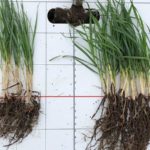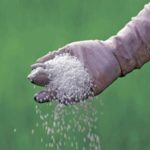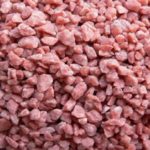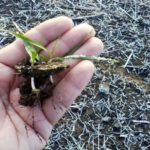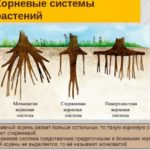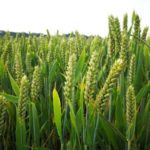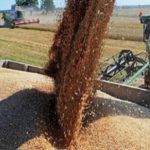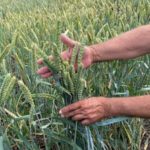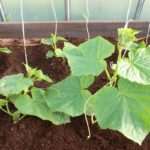Plants, thanks to their roots, are anchored in the ground and absorb water and mineral elements from the soil layer. The root system, formed by a collection of roots, is of two types. The root system of wheat is classified as fibrous type. This species, which occupies a significant area of land in breadth, is characteristic of cereal monocotyledonous plant crops (barley, rye).
What kind of root system is formed in wheat?
The types of roots that form the fibrous root system are divided into adventitious and main:
- Primary roots appear at the germination stage of planting material.Their number can vary between 3-5 shoots, which is determined by the varietal characteristics of the crop. It is noteworthy that at the beginning of the growing season the plant feeds mainly from these roots;
- Secondary (stem, nodal) root processes are formed at the tillering stage of wheat. As a rule, two secondary shoots grow from the stem, providing nutrition to the side shoots. If, due to drought, plants do not develop a strong root system, the primary roots continue to perform the nutritional function.
In case of favorable weather conditions, the primary root shoots do not die off, but provide nutrition to the main shoot of the wheat bush. But the main function of extracting moisture and nutrients from the soil is performed by numerous secondary roots. Therefore, wheat yield depends, first of all, on the power of nodal shoots.
Key Features
The development of wheat roots depends significantly on external factors. Basic indicators:
- soil moisture. It has been established that excess moisture negatively affects the development of wheat. Since the air conductivity of the soil and the access of oxygen to the roots are significantly reduced. Drought is also a negative – the formation of stem roots stops. The optimal soil moisture parameter is 60-75%;
- air temperature. The fibrous root system of spring varieties develops better when sown at +13-16 °C. In winter varieties it actively develops when sown at a temperature of +15-20 °C;
- Crop rotation also plays an important role. The best precursor for cereal crops is peas or black fallow - in these cases, intensive formation of secondary roots is observed.An undesirable option is to sow winter varieties after corn, since little productive moisture is retained in the upper soil layer.
How does the root grow and develop?
Wheat varieties are divided into spring and winter. Since crops are sown under different weather conditions, some features of root formation can be noted.
The recommended sowing period for winter wheat varieties is the end of September - the first days of October. Plants have time to form a root system, sprout shoots, and develop resistance to low temperatures. As a rule, by the beginning of winter, primary roots deepen by 90-95 cm, and stem roots grow in a soil layer 35-60 cm thick. As soon as the temperature rises on spring days, the development of the underground part of the plant resumes, mainly due to secondary root processes.
When sowing spring wheat, an important factor influencing the development of the root system is soil moisture. Since nodal roots grow later, during a dry spring there is a decrease in crop yield.
Effect of fertilizers
Naturally, the mineral composition of the soil influences the development and growth of the plant and is the key to productivity.
Nitrogen supplements promote the growth of the above-ground green part of the plant to a greater extent than the underground part. However, significant root growth is observed in wheat grown on chernozems.
Phosphorus supplements promote the growth of the root system. This feature is taken into account when sowing grain in areas with insufficient moisture levels. Since developed roots provide plants with moisture from deeper layers of the earth. It is important to provide plants with phosphorus at an early stage of development.
Secondary root system in winter wheat
The development of cereal crops depends on the variety and weather. Optimal conditions for sowing winter wheat: temperature: +14-17 °C, sufficient moisture in the upper soil layer. In this case, the stem roots actively and fully develop deeper and laterally, since they are supplied with moisture and nutrients. When it gets colder, the development of stem shoots slows down. Root growth stops when the temperature drops to +2 °C.
In dry autumn, the development of secondary roots is inhibited. In the absence of rain, there is a lack of wheat tillering. In spring, the rate of formation of the root system slows down. At the same time, during different periods of the growing season, there is a difference in the development of the root system along the horizontal layers of soil.
At the stage of wheat emerging into the tube, the main part of the roots - 55-60%, is concentrated in the upper soil layer (depth - up to 20 cm). Approximately 30% of the root mass develops at a level of 25-40 cm. In the flowering phase, the mass of the root system in the upper layer of soil is reduced to 40-45% and increases in the soil horizon, located at a level of 45-80 cm.
The influence of the degree of development of the wheat root system on the growth of the above-ground part and yield should not be underestimated. It is necessary to take into account the influence of external factors on the activity of roots. By regulating the formation of the root system, it is possible to increase the productivity of cereal crops.


